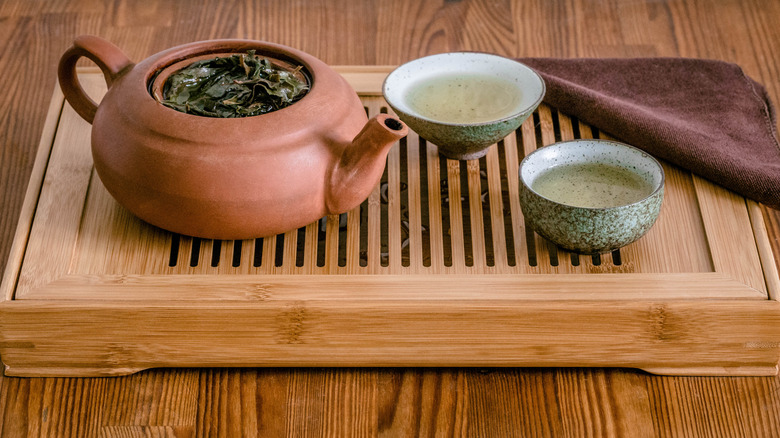Here's How Many Times You Can Reuse A Tea Bag Before Losing Flavor
Have you ever wondered why you automatically reach for a new tea bag if you want a second cup? Maybe you watched other people do it, maybe you were taught this method, or maybe you learned it the not-so-flavorful way by tasting it yourself. But what if you wanted to reuse a satchel for that much-loved afternoon cup of tea? We spoke with fine tea company THEORÓ founder Elle Liu about how many times a tea bag can actually be used. And it's often more than once.
"Most commercial tea bags tend to lose flavor after the first or second steep, as they're often filled with broken leaves or dust-grade tea, with flavor enhanced by additives or masking agents," Liu explains. With higher-quality teas, you might be able to steep sachets or bags two or three times. Liu, however, prefers loose-leaf tea, as it tastes better and offers a full sensory experience that bagged tea can't. "With loose-leaf, you can actually see the integrity of the leaves, and the second or third infusion often reveals something new, not less," she says.
Whether you can re-steep tea is also determined by food safety. Both loose-leaf and bagged teas must be air dried between steeps in a breathable space, not trapped in an airtight container or left in a mug. Damp tea leaves can become a breeding ground for bacteria and mold. "A good rule of thumb: if it smells off or feels slimy, don't reuse it," says Liu.
How a tea's category affects its reusability
Drinking tea can be a luxurious experience rooted in mindfulness and intentionality, all around the world — and it starts with the quality of the leaf. (Ever enjoyed a perfectly appointed cup for high tea, as an example?) With high-end, loose-leaf teas, flavor transforms with every steep.
Black and dark teas like pu-erhs can be enjoyed 15 to 18 times in smaller, shorter brews, or gongfu-style. Evolving with every infusion, they can taste more sweet, earthy, or smooth. Aged white teas can be infused at least 12 times with the gongfu method. "Made from mature leaves and stems, they carry a natural robustness that holds up well. With age, they deepen in character, offering warmth, complexity, and a soft sweetness," says Elle Liu. Tender white teas, however, don't share the reusability of other teas. "Their charm lies in their subtle floral and melon-like notes, which are best enjoyed in the first few steeps," Liu says. "In gongfu brewing, you might reach up to 10 to 12 infusions, but their elegance begins to fade after the sixth or seventh cup."
Green tea — if it's brewed gently, with whole leaves, lower temperatures, and shorter steeps — can be infused up to 12 times. Heavily oxidized oolong teas are longer lasting because of where they're grown and how they're roasted. Over the course of twelve infusions, Liu notes, "Their dark, twisted leaves unfurl slowly, revealing a steady evolution of roasted stone fruit, orchid, and mineral notes." Tea's metamorphosis between infusions is yet another reason why, in my opinion, when you consider whether to start your morning with coffee or tea, the answer is always tea.

